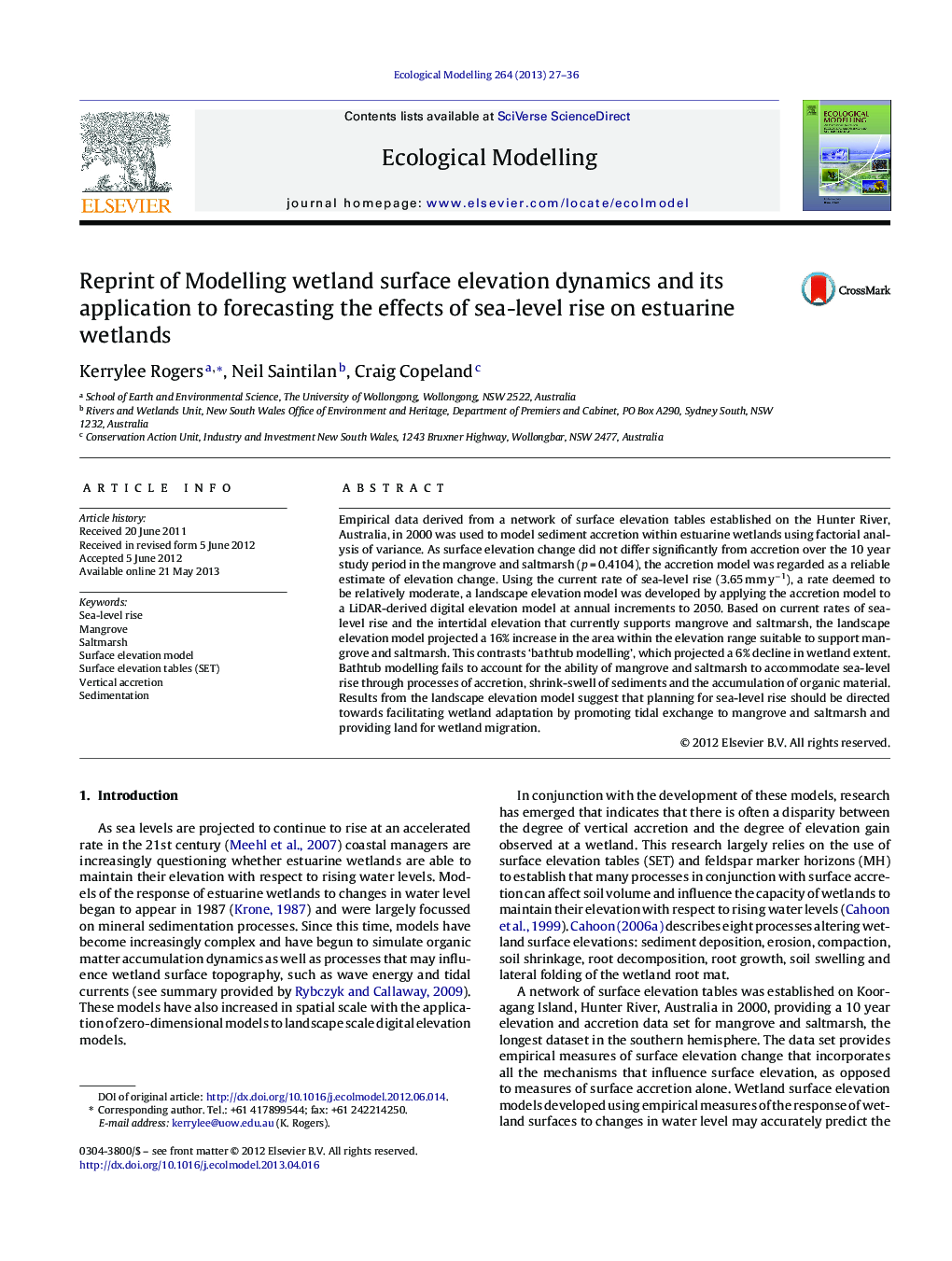| کد مقاله | کد نشریه | سال انتشار | مقاله انگلیسی | نسخه تمام متن |
|---|---|---|---|---|
| 4376084 | 1617482 | 2013 | 10 صفحه PDF | دانلود رایگان |

• A 10-year surface elevation table dataset was used to develop dynamic elevation models (EM).
• Accretion model driven by factors influencing accretion developed through factorial analysis.
• Initial EM (y = 2008) developed by applying annual accretion increment to LiDAR derived DEM (y = 2007).
• Later EMs (2009–2050) developed by applying annual accretion increment to EM of previous year.
• EM at 2050 projected a 16% increase in area able to support estuarine wetlands.
Empirical data derived from a network of surface elevation tables established on the Hunter River, Australia, in 2000 was used to model sediment accretion within estuarine wetlands using factorial analysis of variance. As surface elevation change did not differ significantly from accretion over the 10 year study period in the mangrove and saltmarsh (p = 0.4104), the accretion model was regarded as a reliable estimate of elevation change. Using the current rate of sea-level rise (3.65 mm y−1), a rate deemed to be relatively moderate, a landscape elevation model was developed by applying the accretion model to a LiDAR-derived digital elevation model at annual increments to 2050. Based on current rates of sea-level rise and the intertidal elevation that currently supports mangrove and saltmarsh, the landscape elevation model projected a 16% increase in the area within the elevation range suitable to support mangrove and saltmarsh. This contrasts ‘bathtub modelling’, which projected a 6% decline in wetland extent. Bathtub modelling fails to account for the ability of mangrove and saltmarsh to accommodate sea-level rise through processes of accretion, shrink-swell of sediments and the accumulation of organic material. Results from the landscape elevation model suggest that planning for sea-level rise should be directed towards facilitating wetland adaptation by promoting tidal exchange to mangrove and saltmarsh and providing land for wetland migration.
Journal: Ecological Modelling - Volume 264, 24 August 2013, Pages 27–36